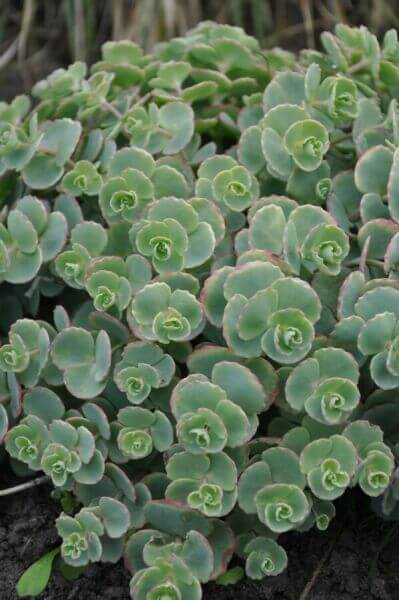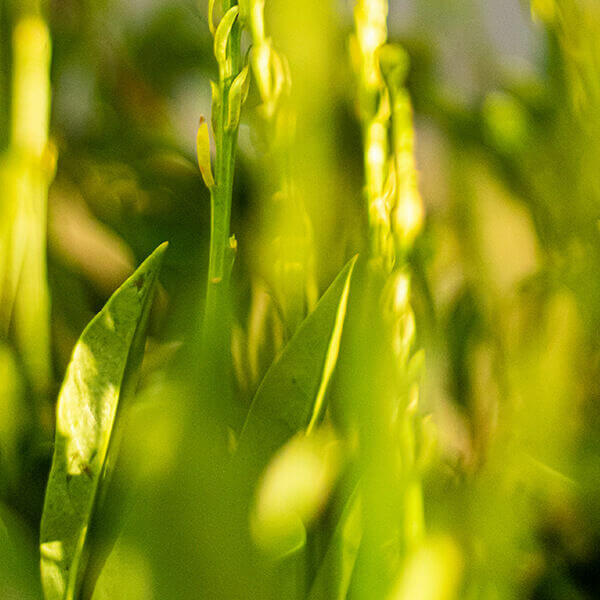Best Hedging Plants For Neat Hedges
Best Hedging Plants For Neat Hedges
Blog Article
Hedge Plants For Walkway Borders
Improve your garden's attraction with lavish hedge ranges such as Yew (Taxus), Thuja, Laurel, Photinia, and Bamboo, celebrated for their structural integrity and ecological benefits.
Yew and Thuja supply evergreen coverage and winter season strength, while Laurel offers quick development and broad, aromatic leaves.
Photinia adds seasonal appeal with its vibrant red foliage, and Bamboo provides a low-maintenance, peaceful ambiance.
These hedges enhance air quality, decrease noise, and develop tranquil, private areas.
Proper planting, spacing, and maintenance make sure energetic development and environmental consistency.
Explore how these rich ranges can raise your garden's beauty and well-being.
Secret Takeaways
Transform Your Garden With Lush Hedge Varieties
- Select Yew for its thick, evergreen development and unrivaled longevity.
- Go with Laurel for its quick growth and broad leaves, making sure fast privacy.
- Choose Photinia for its vibrant seasonal foliage, which turns a striking dark red.
- Use Bamboo for a low-maintenance, winter-hardy hedge with visual appeal.
- Area plants 2-3 per meter and prune frequently for optimum development and health.
Popular Hedge Plants
When transforming a garden with rich hedge varieties, it's necessary to think about popular hedge plants such as Yew, Thuja, Laurel, and Photinia due to their distinct qualities and benefits.
Yew (Taxus) is highly esteemed for its longevity and dense, green growth, making it a prime choice for enduring landscapes.
Thuja is noted for its evergreen foliage and robust winter resilience.
Photinia adds seasonal vibrancy with red leaves that darken over time, creating dynamic visual appeal.
Laurel uses quick development and aromatic, broad leaves, perfect for fast privacy.
Additionally, Bamboo is an excellent choice for atmosphere, providing a low-maintenance, winter-hardy choice that enhances the garden's visual with its stylish, swaying canes.
These choices deal with a range of horticultural needs and preferences.
Advantages of Garden Hedges
Garden hedges provide a wide range of advantages, making them a valuable addition to any landscape. These natural barriers are cost-effective to carry out and offer significant wind defense, improving air circulation and adding to noise decrease. The dense foliage of hedges like Thuja and Beech makes sure privacy by blocking exposure, developing a peaceful and remote environment.
Hedges likewise play a crucial function in microclimate regulation, supplying a stable environment that promotes plant development and reduces temperature changes. Their complex leaf structures filter toxins, improving air quality and contributing to a healthier garden community.
Additionally, hedges excel in sound decrease, absorbing and deflecting acoustic waves to lower ambient sound levels. This dual functionality of supplying both visual and acoustic privacy improves the total tranquility and aesthetic appeal of any garden.
Planting and Upkeep Tips
For an effective hedge, meticulous preparation of the planting area is important. Make sure the soil has proper pH and drainage to support strong root development.
Space the plants appropriately for the selected species. Water the hedge often throughout its preliminary development stage, changing as required with seasonal modifications.
Carry out a systematic pest control and disease prevention strategy, utilizing chemical or natural treatments when necessary. Regularly inspect for aphids, mites, and fungal infections.
Apply mulch to retain moisture and suppress weeds. Seasonal pruning promotes dense development and air blood circulation, essential for plant health.
Following these guidelines will assist you cultivate a lively, well-maintained hedge that enhances the appeal of your garden.
Spacing and Cutting Standards
Spacing and Trimming Guidelines
Correct spacing and cutting are important for cultivating healthy, visually appealing hedges. Adequate spacing makes sure each plant gets enough nutrients, light, and airflow.
Follow these guidelines for optimum hedge upkeep:
- Spacing: Position hedge plants 2-3 plants per meter to encourage robust development.
- Pruning Methods: Regular pruning is important for maintaining wanted hedge height and shape. Cut new development in summertime and cut back older wood throughout winter.
- Seasonal Care: Change trimming techniques and schedules according to seasonal requirements to ensure plant health.
- Hedge Height: Frequently monitor and cut to maintain the wanted hedge height and achieve consistent aesthetics.
Adhering to these actions will guarantee your hedge prospers, boosting both the appeal and functionality of your garden.
Picking the Right Hedge
Picking the Right Hedge
Selecting the appropriate hedge includes evaluating elements such as fully grown height, foliage density, and environmental durability. Effective hedge plant selection requires understanding each types' growth qualities and site-specific flexibility.
For example, Yew (Taxus) offers outstanding durability and dense growth, while Thuja is significant for its winter durability. In addition, thinking about upkeep requirements is crucial; fast-growing species like Laurel or Privet demand regular trimming, whereas low-maintenance alternatives like Bamboo or Ivy may be preferable for those seeking minimal upkeep.
Environmental aspects such as soil type, light availability, and moisture conditions should also guide the selection process. This careful approach ensures the selected hedges will prosper, supplying both visual and practical benefits to the garden landscape.
Delivery and Planting Advice
To guarantee your hedge plants thrive, they should be delivered by specialized carriers and planted without delay upon arrival.
Follow these necessary actions for successful planting:
- Soil Preparation: Enrich the soil with raw material to enhance drainage and nutrient content.
- Planting Depth: Develop a trench two times the width and equal to the depth of the root ball.
- Watering Techniques: Water completely after planting, keeping the soil regularly moist however not filled.
- Mulching: Apply a layer of mulch to retain moisture and reduce weeds.
Client Support and Service
Offered the essential role of prompt assistance in horticultural pursuits, our consumer assistance team is available 6 days a week through telephone, email, and social networks to provide skilled recommendations and swiftly resolve any issues. Their commitment to fast reaction times makes sure client satisfaction by fixing queries associated with plant health, optimal planting techniques, and maintenance schedules.

Telephone
Within 24 hours
This thorough assistance system, strengthened by a stellar 9.3/ 10 consumer rating, highlights our dedication to improving the gardening experience for every client.
Regularly Asked Concerns
How Long Does It Consider Hedge Plants to Establish?
Hedge plants generally need one to hedging plants three years to end up being fully developed, with the specific duration differing by species and growing conditions.
Reliable care during this critical duration is essential for robust development. Constant watering, vigilant weed control, and proper fertilizer application are pivotal in promoting strong root advancement.
For instance, fast-growing species like Laurel might develop faster, while slower-growing ranges such as Yew may take longer. Diligent maintenance accelerates the establishment procedure, resulting in dense and healthy hedges.
What Are the Finest Hedge Plants for Privacy?
The question of the finest hedge plants for personal privacy includes evaluating evergreen and deciduous choices.
Evergreen hedges like Thuja, Laurel, and Cypress offer year-round protection, ensuring continuous personal privacy.
In contrast, deciduous hedges such as Beech provide seasonal privacy, shedding leaves in chillier months.
Secret upkeep pointers for privacy hedges include regular trimming, fertilizing in spring, and proper spacing-- generally 2 to 3 plants per meter.
Furthermore, consistent watering and persistent weed removal are important for promoting healthy, thick development.
Can Hedge Plants Bring In Wildlife to My Garden?
Yes, hedge plants can bring in wildlife to your garden by supplying vital advantages like shelter, food, and nesting websites, consequently improving local biodiversity. Yew, holly, and laurel are exceptional for attracting birds, while ivy supports a variety of insects.
Nevertheless, it is very important to keep in mind that there are some disadvantages, such as increased maintenance to manage pests and routine upkeep. Carefully picking and keeping hedge varieties can help stabilize these drawbacks and advantages, ultimately fostering a lively and sustainable ecosystem in your garden.
Exist Any Flowering Hedge Plants Available?
Yes, there are flowering hedge plants readily available that can boost the beauty of your garden.
For instance, Elaeagnus, also understood as Olive Willow, produces fragrant white flowers in the fall, adding a touch of beauty.
Photinia, another popular choice, showcases dynamic red leaves that mature into an abundant green, creating a vibrant visual effect throughout the seasons.
To guarantee these plants prosper, it's important to practice correct pruning methods and seasonal upkeep, such as trimming brand-new development in the summertime and cutting down in the winter.
These steps will assist maintain the health and visual appeal of your blooming hedges.
How Do I Prevent Insects in My Hedge Plants?
To avoid insects in hedge plants, employ natural pest control approaches and keep appropriate hedge care. Present beneficial insects like ladybugs, which take advantage of damaging pests, to produce a well balanced environment.
Regularly examine your hedges for indications of problem and without delay eliminate any afflicted parts to avoid the spread. Make sure the health of your hedges by applying balanced fertilizers and providing sufficient water.
Use mulching to maintain soil wetness and correct spacing to lower plant stress and promote robust growth. These practices collectively help in minimizing insect concerns and keeping a healthy hedge.
Conclusion
In essence, picking the ideal hedge varieties such as Yew, Thuja, and Laurel can transform any garden into a relaxing haven. These plants offer year-round greenery, enhance visual appeal, and deal useful benefits like noise decrease and wind security.
Appropriate planting methods, accurate spacing, consistent watering, and seasonal cutting are crucial for ideal growth.
Reputable delivery services and expert consumer support ensure a smooth experience from purchase to planting, making it easier than ever to elevate your outdoor area.
Garden hedges provide a wide range of benefits, making them an important addition to any landscape. These natural barriers are economical to implement and supply considerable wind protection, boosting air flow and contributing to noise reduction. The thick foliage of hedges like Thuja and Beech ensures personal privacy by obstructing presence, producing a remote and peaceful environment.

Pruning Strategies: Routine pruning is vital for preserving preferred hedge height and shape. Trim new development in summer season and cut back older wood throughout winter.
Report this page